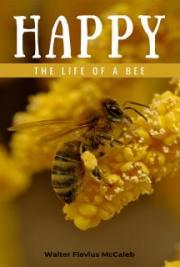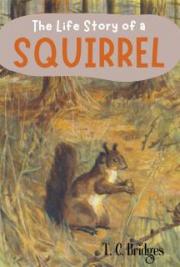Chapter 10
Aggression
I thought I would address aggressive
behavior in horses later because I wanted to deal
more with normal behavior first. Once we
understand what normal is, we can start to
understand what abnormal is.
Normal horses are by nature timid, fearful
prey animals, who when given the choice between
fight or flight, more often will chose flight. Horses
do possess some aggression naturally, such as a
Human Equine Relationship Development
H.E.R.D -209-mare protecting her foal, or a lead mare defending
her role to a newly introduced horse. For the most
part it is defensive aggression.
Aggressive behavior and dominant
behavior can be easily confused. Aggression is
when a horse is going after someone or something
with extreme physical force. Aggressive behavior
can be displayed by chasing, stomping, biting,
kicking, bucking or raring up. There is a normal
level of aggression that keeps balance within a
herd and maintains the hierarchy and then there
is an abnormal level. This chapter is about
abnormal levels of aggressive behavior.
Normal levels of aggression will not pose a
problem for the human. Normal levels can be
corrected by reasonable means. Abnormal levels
will require more work and expertise and can be
very dangerous. It is easy to know when the limits
have been exceeded because a horse is trying to
inflict serious harm to humans on a regular basis.
Even a normally timid horse under
extreme stress may resort to fight. That is
important to understand. If a horse feels that it is
either die or fight back, it will sometimes chose to
Human Equine Relationship Development
H.E.R.D -210-stand its' ground and fight. Not always, but often
enough that you should be aware that it can
happen. Usually it will be an isolated incident,
instead of the habitual aggression we will be
discussing.
Extremely aggressive horses are not
normally born that way. They can be, but it is
rare. Normally horses are born with the normal
attributes of a horse. Timidity & flight. Aggression
is something that is learned behavior for most
horses. Horse to horse aggression is learned
within the herd. Horse to human aggression is
learned from interactions with humans. Horses
possess a minimal amount of aggression to
survive and use it mostly as a defense mechanism.
They are a prey animal remember, you see more
aggressive behavior coming from predators. This
is not the aggression I am talking about. The
exception would be stallions.
If you ever have the opportunity to watch
foals interact with each you will understand
better what I am talking about. They will romp
and play, sometimes they will show dominance
over each other. But you won't see one attacking
Human Equine Relationship Development
H.E.R.D -211-the other with the ferociousness that I am talking
about when I say aggressive behavior
The exception to that rule would be a
normally timid horse that is in severe pain for
some reason. Pain can cause a horse to act out in
aggression because he is extremely afraid of the
pain that he is in. But even then, a horse can
tolerate a high threshold of pain before reverting
to aggression. When dealing with an aggressive
horse rule out the possibility that his bad behavior
is not being brought on by pain. Colic, toothache,
back pain, leg pain etc.
For the most part aggression is learned
because an animal has been pushed to the
breaking point at some point in their lives. They
had to make the decision between fight or flight,
and they chose fight and it worked to relieve the
pressure that they were under at the time.
It is the same rule used in training,
pressure release is a reward. By fighting the
pressure was relieved and thus they learned some
really bad behavior. This happens because of
human error.
Realize how easily it is for a horse to learn
Human Equine Relationship Development
H.E.R.D -212-something new, be it good or bad. They make
behavior connections rather quickly.
So understand that if you are teaching a
horse anything and they react aggressively
towards you and you do nothing or give in to
them, they will soon repeat it because it worked.
Most aggression in horses thus is a result of
fear. The initial fear triggered the response of
flight, when that was not available, fight was left.
Once this worked for the horse to relieve the fear,
he learns a new behavior pattern. Instead of
fear=flight=release of stress produced by fear
now he has this pattern fear=fight=release of
stress produced by fear. Pressure and stress can
be one in the same.
Here is an example. A mare is being
worked for the first time in a few years. Her owner
walks out to catch her and put her halter on. She
had some training in the past but not a lot , for
explanation purposes lets say she is a 5 year old
mare who has lived most of her life out to pasture.
Her owner decides to start working with her a bit
more and she goes out to halter her. She backs the
horse into a corner of the fence and manages to
Human Equine Relationship Development
H.E.R.D -213-put a rope on her, as she nervously fiddles with
the halter the horse displays signs of discomfort &
fear, the slight pinning of the ears, but the owner
pays no attention to her warning. The mare
increases the intensity of her initial warning, the
pinned ears, and nips the owner in the side. The
owner who lacks confidence and skill, flees from
the horse in pain. Giving up her plans of haltering
this horse on this day. Well that worked out for
the mare and she thinks hmmmmmmm
interesting.
Soon the mare is pinning her ears and
biting everyone for any thing she feels threatens
her. Haltering, grooming, leading. Now the owner
has a big problem. A horse that she fears because
it is a biter . The owner who is now fearful will
unlikely nip this bad behavior in the bud.
Horses can learn to paw at people with
their front legs, they can chase people, bite
people, and of course kick people once they learn
that they can successfully scare away the “stress”
brought on by people by using fight instead of
flight.
This is a secret most horses will never learn
Human Equine Relationship Development
H.E.R.D -214-because aggression goes against their inborn
instincts. But some will learn it, and when they
do, watch out because it can become a habitual
problem that can be very dangerous if not dealt
with correctly.
Undoing learned behavior is very hard.
Once you know something, you can't just forget it.
The horse can't either, it becomes a new skill.
Over time it can become worse because a horse
learns through repetition, so the longer the
problem has been allowed to persist, the longer
and harder it will be to cure.
You can avoid teaching aggression to
horses by always giving them the option of flight
to some degree. Pushing a horse into a corner and
saying do or die is a good way to ensure that you
will trigger a fight response if overdone.
We see this clearly in the case of breaking a
horse to a ride. Most horses will be pushed past
the limits in this scenario. A horse is usually in a
round pen where he can't flee the stress and fear
of the man on his back. The horse then resorts to
aggression in bucking and throwing himself
around, trying to fight the man off of his back.
Human Equine Relationship Development
H.E.R.D -215-The man persists until the fight has been lost by
the horse.
The horse may try the bucking around a
few more times in the future, but as long as he
repeatedly loses that fight, he will give up and
accept it as a lost cause. BUT if he somehow does
succeed in releasing the stress by displacing the
rider, and the rider does not get back on, well he
will fight it out every single time thinking he can
repeat his former success. That is why some jobs,
should be left to some people. Breaking a horse is
one of those jobs. The rider must never give in to
the horses fight or breaking will be unsuccessful.
Learning when to call it quits is as
important as knowing when not to stop.
Sometimes calling it quits is the correct course of
action but it has to be done correctly to work. Do
not wait until the fight instinct has been triggered
to make that call. Make sure you have enough
horse awareness to make the call before the fight
trigger is pulled.
Lets face facts, in a fight with a horse, the
human is going to lose. The horse doesn't know
that but he can learn it really quickly if you allow
Human Equine Relationship Development
H.E.R.D -216-him too. Your job is too never reveal that secret to
your horse. If you are up against a horse that is
about to boil over as I like to say, turn down the
heat before he does. You will not be able to
control him once he does, and everything that he
learns will be bad.
Before he reaches his breaking point, and
time will teach you to see it coming, let off of the
gas and revert to something he can and will
willingly do. Slow it all down, take a breather, but
never leave unless your life is in true danger. You stick it out, because if he thinks his behavior has
caused you to leave, he will repeat it again. Revert
back to a simple command that puts you back in
control, like backing up, standing still, or turning
in circles. Try to stay clear of moving him forward.
Forward motion triggers flight. Give him time to
cool off with you. Then try it again but don't push
too hard.
If you are having that much of an issue
with a horse then you may need to take another
look at what you are asking him to do. Perhaps
instead of taking baby steps you have asked him
to make a leap that he doesn't quite understand.
Human Equine Relationship Development
H.E.R.D -217-You may also need to do some gentling or
other fundamental work with them before
proceeding on to what you are trying to teach.
This will apply to every horse other than a
stallion. A stallion has an entirely different make-
up than mares and geldings. He has other
instincts and hormones driving him around.
Stallions are best left to people who have expertise
in working with them. Unlike normal horses
stallions can be aggressive by nature, therefore
they are to be handled entirely different than the
normal timid mare or gelding.
There are also extremely dominant
individuals within the horse herd. You may
encounter a handful of these in your life. Some are
horses that have been kept “wild” for too long and
they have reverted back to a more raw state of
mind. They can be down right mean and nasty
and they don't make any difference between being
aggressive with a man, or with another horse.
This type of aggression is not what I have
been talking about. It is more of a “wild” streak. It
is extreme dominance that has been left
unchallenged for far too long. This aggression
Human Equine Relationship Development
H.E.R.D -218-does not come from a bad experience with
humans, it comes from the lack of experience with
humans. It is fear based to some extent, the fear
of the unknown.
This type of horse will be harder to train
because he is so set in his or her ways. Coupled
with a dominant personality a horse like this
should be left to the professionals to start laying a
safe foundation. A horse of this sorts can easily
kill a human who lacks the experience to
understand and deal with its dominant
personality. This is one reason early socialization
of a horse is so important, it makes everything so
much easier.
Once a horse is displaying regular
aggressive behavior it will take time and effort to
correct it. As a responsible horseman you must
correct it before someone becomes seriously
injured.
Keep in mind that all horses may show
aggression at certain points of their handling.
Pinning of ears when you are cinching a saddle is
a common example but we are talking about
animals who have developed a “habit” of being
Human Equine Relationship Development
H.E.R.D -219-aggressive. They have consistently shown
aggressive behavior over and over.
Biting is a really nasty behavior that can
become very hard to cure if it is left unchecked for
a long period of time. The best way to correct it is
by instantly causing the horse discomfort the
moment he even thinks about biting.
A horse will normally pin its ears before a
bite is delivered. Move the horse out of your space
the instant he even thinks about biting. Carry a
whip if you must, and the second you notice he is
even thinking about it, drive him out of your
space. That is not to say you need to hit him with
the whip, often it will not be necessary, make a big
fuss and drive him off with the threat of the whip.
If he starts to understand that the thought gets
him in trouble, well he will quit thinking about
biting, if he stops thinking about it, he will stop
doing it.
If he just comes at you open mouthed and
ready to take a chunk out of your arm, then
quickly and sharply reprimand him instantly.
Carry a crop if you must and whack him right on
the end of the nose, if you don't have a crop use
Human Equine Relationship Development
H.E.R.D -220-your hand. Then drive him away. Driving a horse
out of your space instantly puts you in control. Be
careful though, he may try to deliver a parting
kick in your direction. The whack to the nose will
sting, the bite to the arm will be much more
brutal. If you do not feel comfortable in correcting
this dangerous vice yourself consult a trainer who
can.
A lot of the problems people face with
aggression can be avoided by making sure that
your horses understand and respect your personal
space by asserting your confidence over them
constantly from day one. If a horse is only allowed
to enter your space with a submissive attitude
you won't have issues with aggression. Drive them
away anytime they do something you feel is a
show of dominance over you. Dominance is just
the first step to aggression if left unchecked.
This is where making sure you have
developed good communication skills with your
horse is of utmost importance. Good
communication can literally save your life when
dealing with horses. Remember communication is
not only speaking, it is also listening. You must be
Human Equine Relationship Development
H.E.R.D -221-so in tune and aware that even when the horse
whispers to you, you can hear the slightest
indication that aggression is about to be
displayed.
There are three options for the horse owner
who is dealing with extreme aggression.
1. Deal with it yourself. This will take a
strong and confident approach to be
successful. If you even have the slightest
apprehension about dealing with it
yourself, don't.
2. Hire someone else to deal with it.
Please do your homework though, there are
lots of horse trainers but only a few will
provide quality results. Some horse
trainers could actually make a fearful
aggression issue worse if they are too
aggressive in treating it.
3. Sell it and cut your losses. I know that
sounds so cold but a 1400 pound animal
that is threatening bodily harm is not
worth keeping if you are not willing to take
option 1 or 2. You are left only with the
option of cutting your losses and replacing
Human Equine Relationship Development
H.E.R.D -222-the ill behaved horse with one that has
better behavior. Selling it may be hard, but
keeping it will be harder. Be honest about
it's faults to potential buyers as this is the
responsible and honest thing to do.
That is all you can do. I have sold a horse
because of aggression issues because I have
children. At our farm I like to maintain a level of
natural existence with the horses. I like for my
children to be able to enter the pasture with the
herd and have no fear of them being harmed by a
horse. With an aggressive horse in my herd I can't
do that. As I am teaching my horses to be
confident in my leadership, I am also teaching my
children to be confident and feel safe with the
horses.
I can hear the boos and hisses now, I gave
up on a horse. I did, but because I have a bigger
responsibility to my children. As a parent I can
not keep an animal that I feel would harm my
children or even kill them given the chance. I
don't apologize for that.
I tried to teach the horse to stop biting. His
Human Equine Relationship Development
H.E.R.D -223-aggression seemed to center around his food,
which made the whole situation worse. Behavior
that is bad when connected with food is extremely
hard to cure because the animal believes that the
food is a reward for the bad behavior. In this
horses case, he thought he was bullying me to the
point of surrendering his food. I was told to take
his food completely away from him but I won't do
that. That goes against what I personally believe
about being a leader. I think starving a horse into
submission is wrong regardless if it would provide
results to some degree.
When you were about to feed he would pin
his ears and come at you with his mouth open. I
started to take the lunge whip and chase him away
and make him stand out away from the dish until
I allowed him to come in to eat. I started counting
to five, then after a few days to ten, then fifteen
seconds. He would calm down a little but I got the
feeling he was just playing a game with me. I
could tell he was smart enough to pretend to
submit to get his food. Because every day we went
through the same ordeal.
He was a tester. He constantly was testing
Human Equine Relationship Development
H.E.R.D -224-his status in the herd. He was always sneaking up
trying to push the boundaries and he never really
settled into any given spot.
Normal horses do from time to time try to
move up the social ladder, often this is when a
new individual is added to the herd. But in a well
balanced herd the members seem to filter into
spot and stay there until someone leaves or
someone enters. There are little attempts here
and there at seeing what they can get away with,
like a mouthful of grain out of a superiors' food
pan. But this particular horse tried it every day at
every feeding time with even the lead mare. He
tried to annoy his way to the top. He would stand
there after he gobbled down his grain and move in
closer and closer, inch by inch, trying to get in the
lead mares grain. She would have nothing of it, he
would push her to squealing and kicking every
day. And the next day he would just move in
again, inch by inch, until she was forced to run
him off. He was very persistent.
I tried join up and again I felt his efforts
were less than authentic. I swear he knew how to
pretend to give me what I wanted so I would leave
Human Equine Relationship Development
H.E.R.D -225-him alone to pester his way up the ladder. He
would submit in join up, follow me like a puppy
dog, and low and behold the very next day I was
met with pinned ears at feeding time or worse
sometimes an open mouth. Some days were
better than others and I had to assert myself
constantly with him to keep any ground I gained.
And he literally had no respect for the
children. They were all smaller, weaker, less
important beings to him. It took everything in me
to control him. I knew the children had little
chance of having a good relationship with him.
They could no longer enjoy spending time
in the field with the other horses. And after 6
months of gaining little more than an ounce of
respect. The respect wasn't even for me it was for
my whip. I said enough is enough and it is time
for you to go on to someone who has a lot of time
and no children.
I learned many very valuable lessons
through him. Buying the wrong horse can be an
expensive mistake. In my mind he remains the
prime







